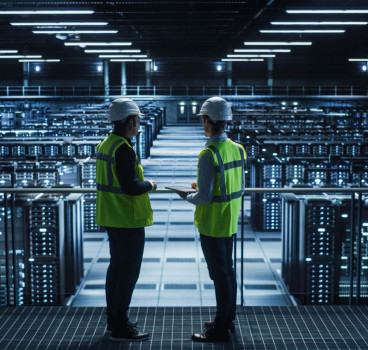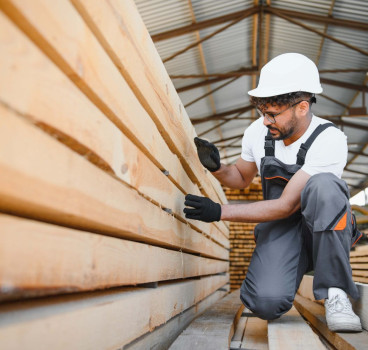BUILDING IMPACT ON HEALTH AND WELLBEING
Creating sustainable buildings which make occupants feel better as well as happier and more productive should be a given writes Sarah Peake, Sustainability Manager for Sika. After all, we spend much of our day indoors. The global sustainability standard BREEAM embraces many different facets of sustainability from materials to energy to water use with Health and Wellbeing representing one of the biggest proportions of credits available. Other green building standards, such as the WELL Building Standard and the Living Building Challenge put the occupant's health and wellbeing at the centre of the entire standard. However you don't have to be working to a green building standard to see the benefits of some simple measures that are easy to incorporate into a new build or even in some cases a refurbishment project.
It has been estimated that staff costs, including salaries and benefits, typically account for about 90% of business operating costs. Therefore, what may appear to be a modest improvement in employee health or productivity can have a huge financial implication for employers – one that is many times larger than any other financial savings associated with an efficiently designed and operated building.
Lighting in the workplace is a key consideration and must satisfy a variety of needs. As well as allowing us to see the task in front of us, lighting can also affect many aspects of wellbeing, including comfort, communication, mood, health, safety and aesthetics. Poor visibility, glare, flicker and lack of control of the visual environment can all affect task performance, whilst visual discomfort may lead to headaches and eyestrain. It is also important to note that not all colours of light have the same affect on the human body. Blue wavelengths, as exhibited by electronic screens and energy efficient lighting, are useful during daylight hours in that they boost attention, reaction times and moods, but appear to be problematic at night with a potential link to disturbed sleep patterns, diabetes and obesity1.
A Room With A View
A recent study by neuroscientists suggested that office workers with windows received 173 percent more white light exposure during work hours and slept an average of 46 minutes more per night2. Workers without windows reported poorer scores than their counterparts on quality of life measures related to physical problems and vitality, as well as poorer outcomes on measures of overall sleep quality, sleep efficiency, sleep disturbances and daytime dysfunction – all of which can be classed as circadian rhythm disorders. However, attributing these results solely to access to daylight is erroneous. Many researchers now believe that levels of exposure to white light is not the most significant factor and that in fact, views of nature and other biophilic experiences are more important. As such, biophilic research is now increasingly focusing on physiological responses such as brain activity, heart rate, blood pressure and stress hormone levels.
When used appropriately, many Sika products can contribute towards a more sustainable building design potentially leading to a more positive impact upon the building occupant's health and wellbeing. For example, Sika sealants can be used to minimise the amount of window frame and maximise the amount of glazing, increasing the potential for natural lighting. Also Sika's Green Roof Systems can increase the opportunities for views of nature in heavily urbanised environments.
Design in Good Air Quality
Building occupants can be exposed to a range of airborne pollutants including chemicals, micro-organisms and other particles from a variety of sources such as carpets, finishes, cleaning products, office equipment and traffic. Design strategies that ensure good air quality, both by allowing a supply of fresh air through ventilation and stopping pollutants at source by minimising emissions from materials, are essential for the development of a healthy and productive working environment.
Furthermore, the increasing availability of cost-effective wearable devices that measure CO2 levels means that design features - such as mixed-mode ventilation systems that consider thermal comfort and fresh-air requirements - will, in the future, be expected by millennials, generation Zs and top class candidates.
Design out Volatile Organic Compounds
While many volatile organic compounds (VOCs), which are emitted as gases from certain solids and liquids, are considered harmless others can adversely affect human health. Many Sika products have very low VOC content, meeting European standards such as EMICODE EC1 Plus and the requirements of BREEAM New Construction 2018. All new product creation projects at Sika have to consider all aspects of sustainability at the outset, resulting in the development of products that have been specifically designed to have lower emission levels.
Standards of the Future
Putting the focus on the end-user and their wellbeing is something the pioneering WELLBuilding Standardhas done for many years. The recently releasedWELL v2TM pilot has expanded on this, reportedly consideringbuildings as “health intervention tools”. In addition, the RICS SKA rating – an environmental assessment method, benchmark and standard for non-domestic fit-outs – is also undergoing an update that is expected to return the standard to its roots by focusing on a fit-out's impact upon the buildings occupants. The ever increasing popularity and evolution of these standards clearly confirms that the impact of building solutions on the health and wellbeing of building occupants is a topic that is not going to go away.
As such in order to appeal to the staff of the future, companies can no longer ignore the needs of the workers and must do more than simply providing a space to work. The 21st century workplace must offer good design that benefits both the planet and the occupants. As a world class construction material manufacturer, Sika has a clear understanding that all aspects of sustainability and wellbeing impact each other and so can offer sustainable solutions that have a positive impact on the health, wellbeing and productivity of building occupants.
Visit: SikaEveryday
Additional Blogs

What if Building Control went fully digital?
Building control governs structural integrity, fire protection, energy efficiency, accessibility and countless other aspects of design and construction. Historically, this process has been highly...
Read moreWhere most “Smart Buildings” go wrong
Smart buildings are often presented as the ultimate in modern construction - interconnected, efficient, intuitive and driven by real-time data. They promise lower operating costs, reduced energy use,...
Read more

The future of facilities management starts at RIBA Stage 0
Facilities management has traditionally been treated as a discipline that only becomes relevant once a building is handed over. At that point, FM professionals inherit decisions made months or years...
Read more